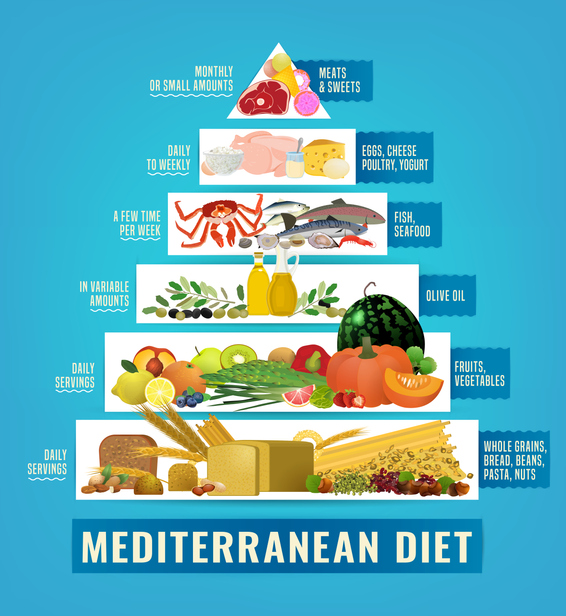How to Lose Weight Safely
Crash diets are not a good idea, but here’s how to safely shed pounds.

You want to drop pounds, now. And you want to do it safely. But how?
First, keep in mind that many experts say it’s best to lose weight gradually because it’s more likely to stay off. If you shed pounds too fast, you’ll lose muscle, bone, and water instead of fat, says the American Academy of Nutrition and Dietetics.
Aim to lose 1-2 pounds per week, and avoid fad diets or products that make promises that sound too good to be true. Although diet pills and drugs like Wegovy, Ozempic, Saxenda and Victoza seem to offer an ‘instant’ fix you may be at higher risk for serious digestive problems.
Issues such as stomach paralysis, pancreatitis, and bowel obstructions have been reported and so it’s best to base your weight loss on changes you can stick with over time.
Make a plan
You’ve probably heard the saying, “calories in, calories out”, meaning you just need to burn more calories than you eat and drink.
But it’s not that simple, as many people can tell you from their own experience.
Your metabolism – how well your body turns calories into fuel – also matters. If you cut too many calories, it’s bad for you because you slow down your metabolism, and that can make you fall short on some essential nutrients.
There are many ways you can do this, without cutting calories too much. You could:
Cut back on portions.
Figure out how many calories you get in a usual day, and trim back a bit. So read food labels to know how many calories are in each serving and drink more water, so you’re not so hungry.
Whatever method you use, you’ll need to favour good-for-you foods like vegetables, fruit, whole grains, and lean protein so you keep up good nutrition.
Working with a nutritionist or dietitian is a good idea, so you make a plan that covers those needs.
Get accountability and support
Many apps can help you track your eating and if they are on your phone you can use them to keep up with your plan.
Not a smartphone fan? Then keep a pen-and-paper food journal of what you ate and when.
Support is vital too so you’ll also want to have people on your side to help you stay motivated and to cheer you on. So ask your family and friends to support your efforts to lose weight.
You might also want to join a weight loss group where you can talk about how it’s going with people who can relate. Or talk with someone you know who’s lost weight healthy way as their encouragement is “contagious,” in a good way!
Find out what drives you to eat
At the most basic level, food is fuel. It gives you energy to do things but very few people eat just for that reason. It’s at every social gathering and it’s where a lot of us turn when we have a rough day.
You’ll need to know what makes you want to eat when you’re not hungry, and have a plan for those moments.
The first step is finding out what your triggers are. Is it stress, anger, anxiety, or depression in a certain part of your life? Or is food your main reward when something good happens?
Next, try to notice when those feelings come up, and have a plan ready to do something else instead of eating. Could you take a walk? Text or talk to a friend?
Lastly, reward yourself for making a different choice. Just don’t use food as the reward.
Reset what and when you eat
You don’t have to go vegan, gluten-free, or quit any particular food group to lose weight. In fact, you’re more likely to keep the pounds off for good if it’s something you can live with for the long term.
But it does make sense to cut way down on, or totally cut out, empty calories. You could:
Limit added sugars.
These are the ones in biscuits, cakes, sugar-sweetened drinks, and other items – not the sugars that are naturally in fruit, for instance.
Sugary foods often have a lot of calories but few nutrients so aim to spend less than 10% of your daily calories on added sugars.
Be choosy about carbs.
You can decide which ones you eat, and how much. Look for those that are low on the glycaemic index or lower in carbs per serving than others.
Wholegrains are better choices than processed items, because processing removes key nutrients such as fibre, iron, and B vitamins. They may be added back, such as in “enriched” bread.
Include protein.
Most of us get enough protein but you could choose to get it from sources like lean meat, poultry, fish, and dairy or vegetarian and vegan sources like nuts, beans, and soy.
Your exact protein needs depend on your age, gender, and how active you are.
Make friends with good fats.
Small amounts of fat can help you feel full and less like you’re on a diet. The better choices are those in fish, nuts and seeds, and olive oil. Those have unsaturated fats – polyunsaturated or monounsaturated fats, specifically.
Fill up on fibre.
You can get fibre from vegetables, whole grains, fruit. Any plant food will have fibre but some have more than others.
Top sources include beans and pulses, artichokes, green peas, broccoli, lentils, and whole grains. Among fruit choose pears, strawberries, avocado, apples, raspberries and banana.
Eat more often.
If you eat 5-6 times a day, it could keep hunger at bay. You could split your calories equally across all of those mini-meals, or make some bigger than others.
You will need to plan portions so that you don’t end up eating more than you bargained for.
What About Meal Replacements?
These products will control your calories. They’re convenient and take the guesswork out of dieting.
There is now a whole range protein drinks, bars etc that are whole meal replacements, but you’ll need to change your eating habits to keep the weight if you stop using them. Many find having one meal replacement a day helpful in maintaining weight loss.
Watch your drinks.
One easy way to lose weight quickly is to cut out liquid calories, such as soft drinks, juice, and alcohol.
Replace them with zero-calorie drinks like lemon water, unsweetened black tea, herbal teas or black coffee.
A word of warning: diet drinks will save you calories, compared with sugary beverages, but research has shown that they are not effective as your body will still seek out other forms of sugar.
The sweeteners used in soft drinks, and in tea or coffee, don’t have a good history as dozens of studies have linked aspartame — the world’s most widely used artificial sweetener — to serious health problems.
The best and safest artificial sweeteners to date are erythritol, xylitol and stevia leaf extracts.
What about fasting?
You might think that fasting is a quick way to drop pounds, but experts don’t recommend it, because it’s not a long-term solution. It’s better to have an eating plan that you can stick to over time and fits into your lifestyle.
Studies have discovered that intermittent fasting boosts working memory in animals and verbal memory in adult humans. It also improved blood pressure and resting heart rates as well as other heart-related measurements.
While both 12-hour and 16-hour fasting can promote fat burning, it’s possible that a 16-hour fast may be more effective. This is because the longer fasting period may lead to a greater depletion of glycogen stores, which can trigger higher levels of fat burning.
All fasts aren’t the same. Some involve skipping all food, some focus on liquids or fruit for instance. There are also fasts where you eat every other day.
During the first days of your fast, you may feel hungry and grumpy. You may also get constipated. And you won’t have the energy to do much, physically. Drink lots of water and take a daily multivitamin. You should also tell your doctor, especially if you take medications that will probably need to be adjusted.
A healthier option may be to look at the 80/20 rule which is a guide for your everyday diet — eat nutritious foods 80 percent of the time and have a serving of your favourite treat with the other 20 percent.
For the “80 percent” part of the plan, focus on drinking lots of water and eating nutritious foods that include: whole grains, fruit and vegetables, lean protein, including plant-based proteins such as beans, soy, and edamame.
Limited amounts of healthy fats from avocados or olive oil and for your treats, or the “20 percent” part, eat your favourite foods in moderation.
For example, you might have a small piece of chocolate cake today and a drink a glass of red wine tomorrow—just not both at the same time. This way of eating is easier to maintain than stricter diets like ketogenic or paleo diets, which limit carbs and processed foods.
The best thing about the 80/20 rule is that you’re never saying, “I can’t eat that.” Instead, you’re saying, “I can eat this today and have that tomorrow.”
Remember that if you do fast, you’ll still need to change your eating habits once your fast ends.
Helpful information:
I know that weight gain is a major concern at menopause as hormonal weight gain and oestrogen dominance can have a real impact.
Certainly there are many healthy diets to choose from, with the Mediterranean being one of the most popular.
Nutritionist Patrick Holford has looked at this issue, and has some interesting views to share in the article below.
https://anna.blog.wellsprings-health.com/a-new-approach-to-dieting/



















